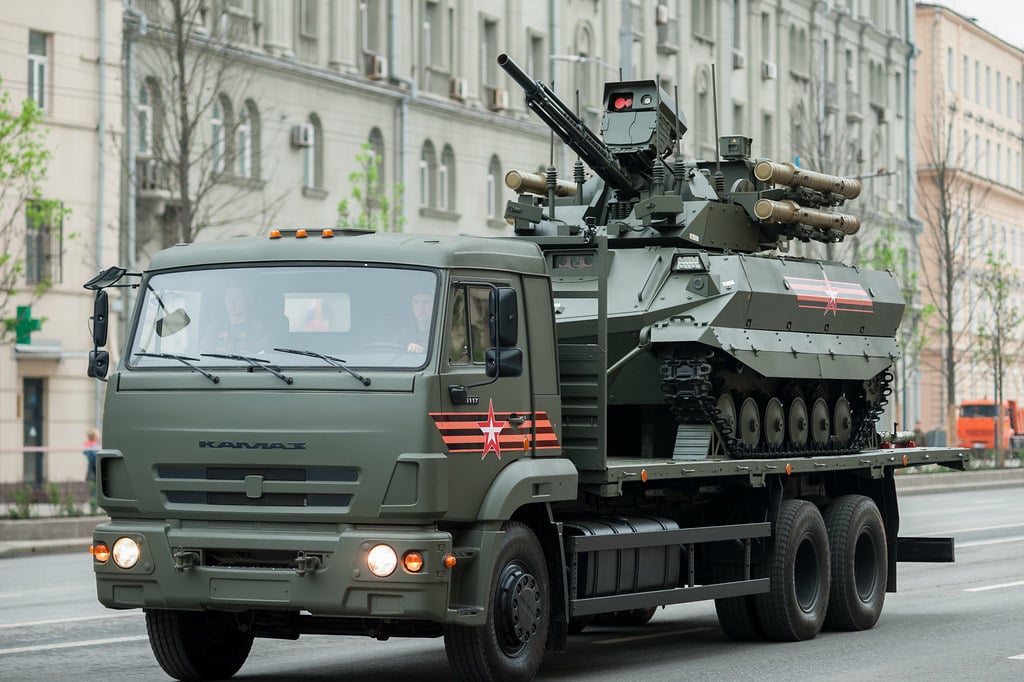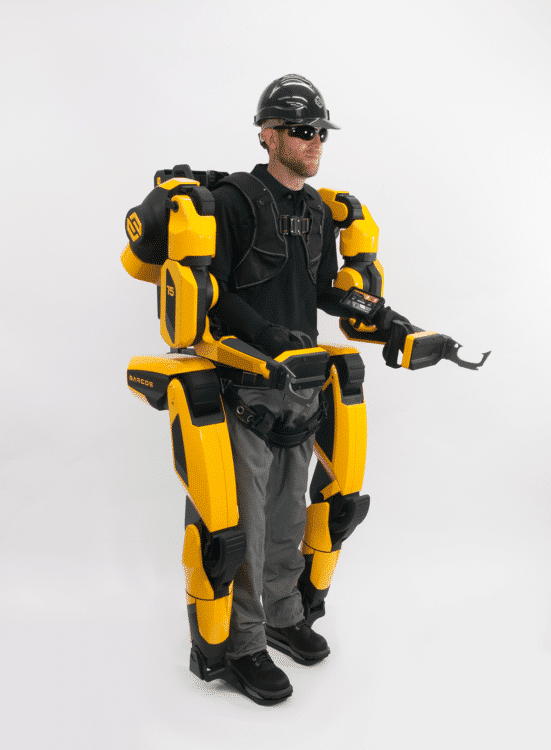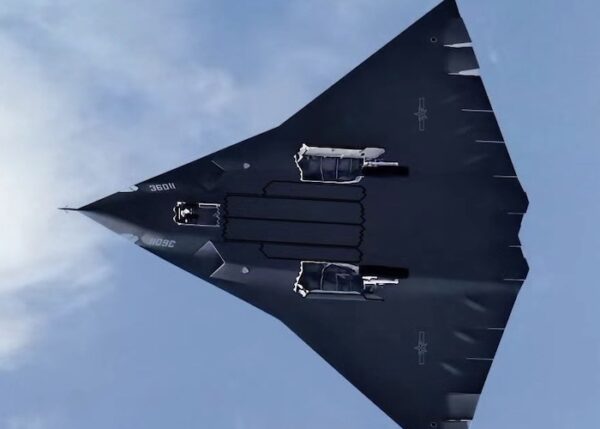RUSSIA’S NEW EXOSKELETON PROBABLY ISN’T ALL IT’S CRACKED UP TO BE
- By Alex Hollings
Share This Article

One of Russia’s largest defense contractors, Rostec, released new footage of their most advanced military exoskeleton in use on Monday, and as is so often the case when Russia makes such an announcement, a number of media outlets have taken their claims at face value in their reporting.
However, historical precedent would suggest that we might want to hold off on congratulating Russia on cracking the exoskeleton egg. Russia has a long history of headline-grabbing military tech claims that have repeatedly proven misleading at best, and downright fabricated at worst.
Perhaps the most egregious falsehood Western Media briefly fell for in recent past was the Russian bipedal robot dubbed “Borris” that was unveiled in December of 2018 at the Putin Youth Forum in the city of Yaroslavl, Russia. The robot performed impressively, seemingly handling a number of complex tasks with ease, suggesting to many that Russia may be further along in the robotics game than many had previously suspected.
'Boris' the Robot was recently showcased on Russian state TV as an advanced robot that was able to walk, talk and dance – but something wasn't quite right… pic.twitter.com/uxQ9hIMOAv
— The Telegraph (@Telegraph) December 13, 2018
That is, until some people began to notice that it looked an awful lot like their incredible new Boris robot was actually nothing more than a person in a robot suit.

That theory was soon proven true.
Вот вам тот самый «современный робот» — эксклюзивное фото подготовки к молодежному форуму Путина в Ярославле.
— ЧТД (@Chtede) December 12, 2018
Фото: «МБХ медиа» pic.twitter.com/M9BorrYTNS
The tweets translate to:
“At the youth forum Putin was shown “the most modern robot Boris”. But this is just a man in a suit.”
“Here is that “modern robot” for you – an exclusive photo of the preparations for Putin’s youth forum in Yaroslavl.”
Of course, that wasn’t Russia’s first robotic claim to be full of hot air in 2018. In April, famed AK-47 maker Kalashnikov unveiled their own intimidating battle suit that was hailed by Western media outlets as something “straight out of Aliens the movie,” despite actually being little more than a statue with automated arms… that bears a closer resemblance to Robocop’s Ed-209… in that it too can’t go up stairs.

Not all of Russia’s exoskeleton or robotic failures have been quite so openly fabricated, and indeed some could be chalked up to little more than Russia’s propaganda machine spinning up faster than the nation’s real military technology could keep pace. Such was likely the case with Russia’s (once again) headline-grabbing Uran-9 unmanned ground combat, or infantry support, vehicle.

The entire world reported on Russia’s announcement that their armed infantry drone, the Uran-9, would be deployed to Syria for combat operations and further testing. The fact that Russia was already placing an armed, semi-autonomous robot into combat suggested to many that Moscow was demonstrating a significant lead when compared to Western efforts to do the same… but after a flurry of coverage regarding the deployment, coverage ceased regarding it’s use. The reason was that Russian state-media outlets (where most Western coverage of these advancements are derived) stopped covering the platform.
It wasn’t until months later that the Uran-9’s long list of deficiencies made its way to the public, not through press coverage picked up by the West initially, but rather after discussions between military leaders held months later found their way online.

In 2018 discussions at a Russian security conference called “Actual Problems of Protection and Security,” held at the N.G. Kuznetsov Naval Academy in St. Petersburg, made their way to the press. The truth regarding the Uran-9, it was revealed, was not nearly as impressive as its coverage in the West would have suggested.
A.P. Anisimov, a Senior Research Officer from the 3rd Central Research Institute of the Russian Defence Ministry, concluded that the platform was incapable of performing the tasks it was designed for. Press coverage claimed a three-kilometer range for the control of the ground drone, but the truth was that operators lost control of it at distances as short as 300 meters or any time they lost line of sight. Operators lost complete control of the vehicle for at least one minute on new fewer than seventeen separate occasions, with two of those instances lasting longer than an hour.

Other significant issues included the chassis repeatedly failing, forcing repairs in the field, the cannon failing to function on six different occasions, and its targeting system proving so poor that engaging targets at any distance was almost impossible.
Of course, does a history of making up news related to Russia’s military exoskeleton and robotic capabilities in the past mean this new Rostec system is similarly more hype than function? Not necessarily. Exoskeleton design has been at the top of many firm’s priority list in recent years. In fact, the Marine Corps started receiving real robotic exoskeletons for testing earlier this year, though the Corps is focused on using them for logistics, rather than combat — as the margin for error is much higher in a warehouse than a firefight.

Of course, America’s tech innovations aren’t immune to being propagandized either, but the Marine Corps’ decision to slow the introduction of exoskeletons until the technology is robust enough for combat at least seems like a more realistic progression.
There are a few more related announcements made by Russian military tech firms recently that later proved to be bunk, aside from their unconfirmed claims about the capabilities of real (and likely largely functional) platforms like the Su-57 stealth fighter, the PAK-DA stealth bomber, or the Su-70 Okhotnik-B stealth UCAV.
In 2018, Russia claimed to have developed active camouflage that could hide soldiers and even vehicles behind a Predator-style cloak of invisibility. Those claims were also made by Rostec, the same firm responsible for this new exoskeleton, and have yet to materialize.

In another social media gaff, Russia’s state news agency RIA Novosti tweeted that Vladimir Putin was observing the exercises of Russian military robots, again hyping Russia’s emphasis on combat robotics. The news outlet reported that the students were demonstrating their own robot invention.
Российские военные роботы показали разминку перед Путиным pic.twitter.com/YkdRVzQkXZ
— Кремлевский пул РИА (@Kremlinpool_RIA) April 23, 2019
However, it was soon revealed that the robots were actually South Korean-sourced toys that can be purchased on Amazon.
In other words, based on historical precedent… it would be logical that we hold our applause until some evidence of Rostec’s system actually functioning properly in field conditions finds its way to the media.
Related Posts
Sandboxx News Merch
-

‘AirPower’ Classic Hoodie
$46.00 – $48.00 Select options This product has multiple variants. The options may be chosen on the product page -

‘Sandboxx News’ Trucker Cap
$27.00 Select options This product has multiple variants. The options may be chosen on the product page -

‘Kinetic Diplomacy’ Bumper Sticker (White)
$8.00 Add to cart

Alex Hollings
Alex Hollings is a writer, dad, and Marine veteran.
Related to: Gear & Tech, Military Affairs

Just how good would an F-22/F-35 hybrid fighter really be?

What do we know about China’s new ‘6th gen’ fighters?

It doesn’t matter if China’s new J-36 stealth jet is a fighter or a bomber

Former Navy SEAL and pioneer combat medicine physician is awarded Presidential Citizen’s Medal
Sandboxx News
-

‘Sandboxx News’ Trucker Cap
$27.00 Select options This product has multiple variants. The options may be chosen on the product page -

‘AirPower’ Classic Hoodie
$46.00 – $48.00 Select options This product has multiple variants. The options may be chosen on the product page -

‘AirPower’ Golf Rope Hat
$31.00 Select options This product has multiple variants. The options may be chosen on the product page -

‘Sandboxx News’ Dad Hat
$27.00 Select options This product has multiple variants. The options may be chosen on the product page
